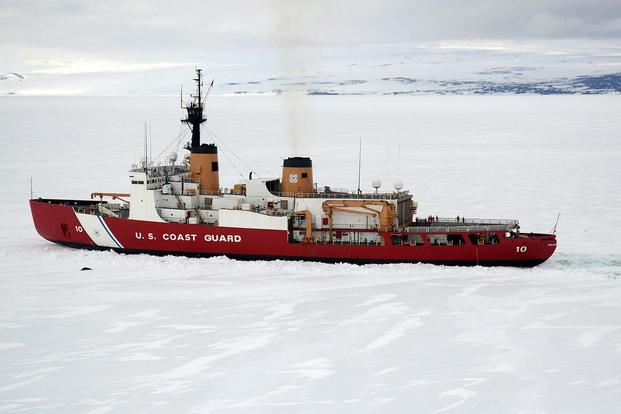Underfunding, lack of strategic planning and denialism are hindering the DoD’s climate response
Indeed, climate change has long been on the military’s radar. (Photo: Sgt. Jerry Rushing / Dept of Defense)
A rock seawall protecting the Air Force’s Cape Lisburne Long Range Radar Station on the North East Alaska coast is under increasing duress from extreme weather patterns affecting Arctic sea ice. early
$50 million has been spent replacing vulnerable parts of the wall already.
In 2013, a late summer monsoon rainstorm struck Fort Irwin, in California, flooding more than
160 buildings and causing extensive damage that took weeks to clean up. Some buildings were out of commission for months.
The 2012 Waldo Canyon Fire, one of the most destructive wildfires in Colorado’s history, only narrowly missed Peterson Air Force Base. The fire cost some
$16 millionto battle.
These are just some of the findings that make up a US Department of Defense vulnerability
report, published earlier this year, looking at the impact of climate change on more than 3,500 military installations. Its conclusion? That more than half of these installations are affected by flooding, drought, winds, wildfires, storm surges and extreme temperatures. Drought proved the single biggest challenge to the military, affecting nearly 800 bases. Next up was wind, which affected more than 750 bases, while non-storm surge-related flooding impacted a little more than 700 bases.
“As an institution, the military sees climate change as a threat to what they do on multiple levels,” said Michael Klare, professor emeritus of peace and world security studies at Hampshire College. “It’s a threat to their bases. It’s a threat to their operations. It creates insurgencies. It creates problems for them. They’re aware of that, and they want to minimize those impediments.”
Indeed, climate change has long been on the military’s radar. It was the George W. Bush administration, for example, that required the Defense Department to procure
25 percent of its energy for its buildings from renewables by 2025. Even President Ronald Reagan received
military memos warning of global warming. While in 2014, the department published a
roadmap establishing an outline to deal with the threats from climate change within the military, as ordered by then-President Barack Obama.
Although President Trump’s administration is known for its climate change denialism, major figures within the military are still noticeably vocal about the issue. In February, Director of National Intelligence Dan Coats warned in a
Worldwide Threat Assessmentthat the impacts from global warming—more air pollution, biodiversity loss and water scarcity—are “
likely to fuel economic and social discontent—and possibly upheaval—through 2018.” Defense Secretary Jim Mattis has been called the “
lone green hope” for his long-established views on the threat of global warming.
Given the immediate threat of rising sea levels, the US Navy is leading the charge to better understand these impacts at the ground level. Last year, a
Navy handbookprovided a planning framework for incorporating the threat of climate change into development projects at Navy installations. To put this into context, a 2016 Union of Concerned Scientists (UCS)
analysis of 18 military installations along the US East coast and the Gulf of Mexico found that by 2050, most of these bases will experience 10 times the number of floods than they do currently
[......]

